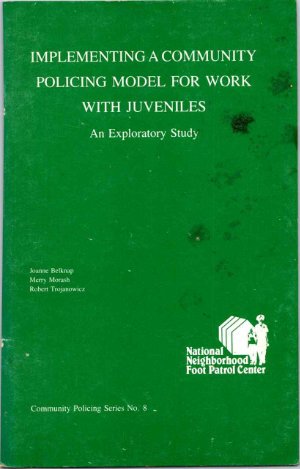By Joanne Belknap, Merry Morash, and Robert Trojanowicz
Theories of role identity were used to determine officers' ideal, actual, and behavioral identities in interactions with teenagers, complainants, and supervisors when dealing with a case of 'rowdy teens.' A purposive sample was drawn representing foot and motor patrol, as well as race (black and white) and gender. The findings support the implementation of the community police model as was intended by the staff, and suggests the validity of the foot patrol concept. The results did not find gender, race, education, and years on the force predictive of police identity orientation or behavior. However, differences between foot and motor patrol in terms of role identity orientation and behavior were found. The research also suggests the importance of role identity orientation as a useful concept in explaining police behavior, and the discussion pinpoints areas and methods that would be fruitful in future research.
Michigan. The National Neighborhood Foot Patrol Center. 1986. 39p.


